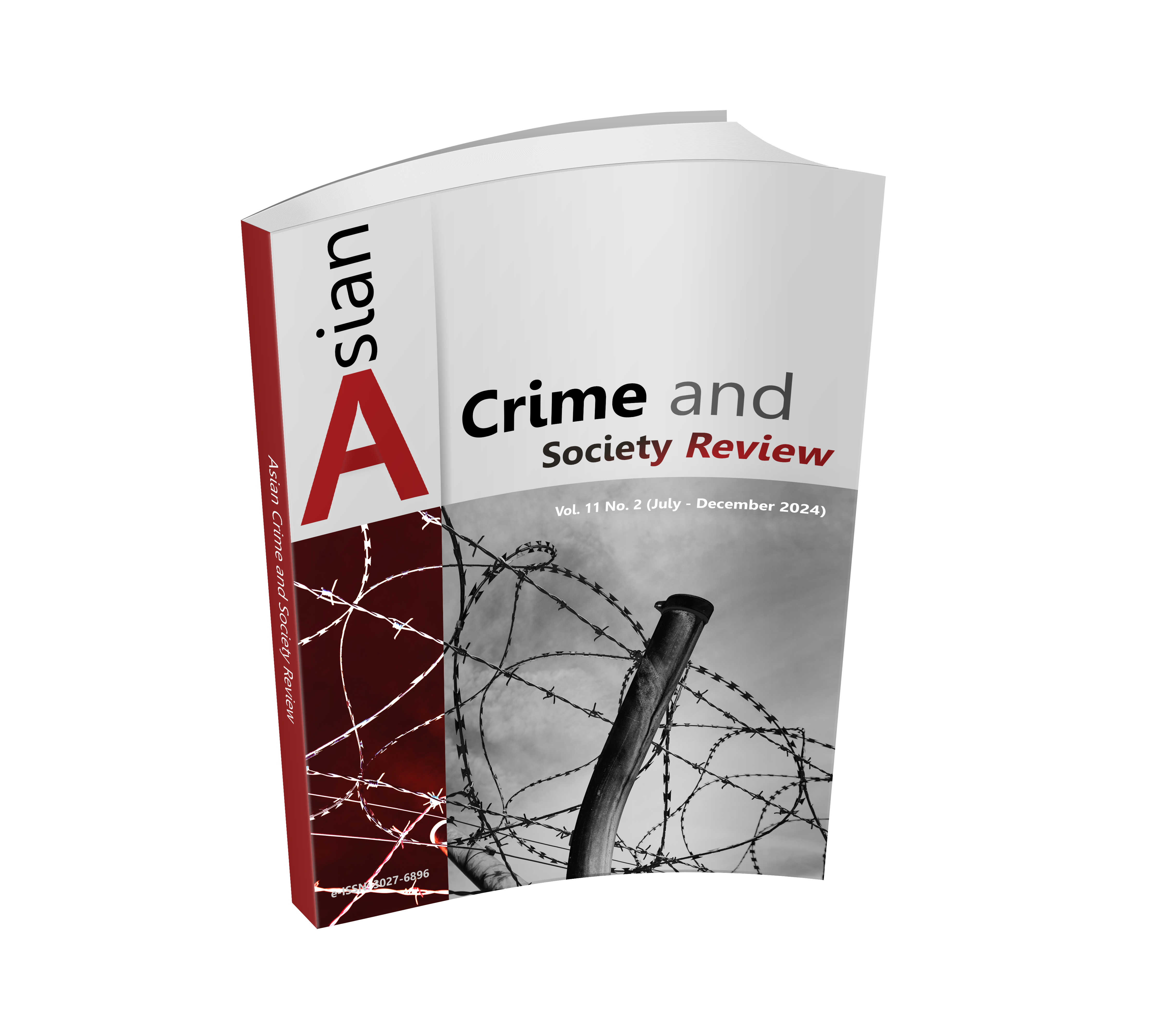FACTORS INFLUENCING SUBSTANCE USE IN CHIANG RAI, THAILAND
DOI:
https://doi.org/10.14456/acsr.2024.8Keywords:
Chiang Rai, Harm Reduction, Indigenous People, Substance Use, SustainableAbstract
This study was designed as a pilot project and stratified sampling that divided the target population into legal and illegal substance use. The objective is to identify factors contributing to substance use and potential harm reduction strategies. Results showed that factors that influence substance use were individual, socioeconomic status, social inequality and vulnerability, and accessibility and availability of substances. 89% of the sample size reported that they perceived accessibility of drugs relatively easy. 25% of respondents use four types of substances daily. Addressing drug prevalence in Chiang Rai requires a holistic and inclusive approach that acknowledges the region’s unique challenges. Integrating evidence-based harm reduction strategies, community engagement, and policy reforms creates a comprehensive framework that promotes the health and well-being of indigenous individuals. Evidence-based research is needed to gain a broader understanding of the efficacy of harm reduction programs, explore how decriminalization impacts the legal system and incarceration rates, as well as examine whether societal attitude changes lead to decreased stigma against drug users.
Downloads
References
Addiction Center. (n.d.). The differences in addiction between men and women. Retrieved from www.addictioncenter.com/addiction/differences-men-women/.
Baingana, F., al’Absi, M., Becker, A., & Pringle, B. (2015). Global research challenges and opportunities for mental health and substance-use disorders. Nature, 527, S172-S177.
Broadhurst, R. (2009). The Golden Triangle: Inside Southeast Asia’s Drug Trade: By Ko-Lin Chin. Ithaca: Cornell University Press, 2009. Australian & New Zealand Journal of Criminology, 42(3), 423-427.
Cestone, L. (2019). Does poverty cause addiction? Comparing experiences with alcoholism and substance abuse by social class, race and ethnicity. Journal of Undergraduate Social Science, 3, 1-13.
Dechsiri, B., & Robert, O. (2019). Drug Trafficking Estimation based on Geo-statistics. Defence Technology Academic Journal, 1(3), 52-61.
Galbraith, N. (2015). The methamphetamine problem. BJPsych Bulletin, 39(5), 218-220.
Herbeck, D., Brecht, M., Christou, D., & Lovinger, K. (2014). A qualitative study of methamphetamine users’ perspectives on barriers and facilitators of drug abstinence. Journal of Psychoactive Drugs, 46(3), 215-225.
Hosmer, D., & Lemeshow, S. (2000). Applied Logistic Regression. New Jersey: John Wiley & Sons, Inc.
Jones, C., Compton, W., & Mustaquim, D. (2020). Patterns and Characteristics of Methamphetamine Use Among Adults — United States, 2015-2018. Morbidity and Mortality Weekly Report, 69(12), 317-323.
Lekuthai, P. (2008). Lanna culture and social development: a case study of Chiangmai Province in Northern Thailand (Discussion Paper No.168). Aichi: Nagoya University.
Malouff, J., Thorsteinsson, E., & Schutte, N. (2005). The Relationship Between the Five-Factor Model of Personality and Symptoms of Clinical Disorders: A Meta-Analysis. Journal of Psychopathology and Behavioral Assessment, 27, 101-114.
Manhica, H., Straatmann, V., Lundin, A., Agardh, E., & Danielsson, A. (2022). Poverty in adolescence and later drug use disorders: understanding the mediation and interaction effects of other psychiatric disorders. BJPsych Open, 8(2), e71.
McHugh, R., Votaw, V., Sugarman, D., & Greenfield, S. (2018). Clinical Psychology Review, 66, 12-23.
Monarque, M., Sabetti, J., & Ferrari, M. (2023). Digital interventions for substance use disorders in young people: rapid review. Substance Abuse Treatment, Prevention, and Policy, 18(1), 13.
Smyth, N., & Kost, K. (1998). Exploring the Nature of the Relationship Between Poverty and Substance Abuse. Journal of Human Behavior in the Social Environment, 1(1), 67-82.
Udplong, A., Apidechkul, T., Srichan, P., Mulikaburt, T., Wongnuch, P., Kitchanapaibul, S., Upala, P., Chomchoei, C., Yeemard, F., Tamornpark, R., & Singkhorn, O. (2022). Drivers, facilitators, and sources of stigma among Akha and Lahu hill tribe people who used methamphetamine in Thailand: a qualitative approach. BMC Public Health, 22, 642.
United Nations Office on Drugs and Crime. (2020). East and Southeast Asia: continued growth in the supply of methamphetamine while synthetic opioids spread. Retrieved from www.unodc.org/unodc/en/frontpage/2020/May/unodc-report-on-east-and-southeast-asia_-continued-growth-in-the-supply-of-methamphetamine-while-synthetic-opioids-spread.html.
United Nations Office on Drugs and Crime. (2023). East and Southeast Asian synthetic drug supply remains at extreme levels and diversifies. Retrieved from www.unodc.org/roseap/2023/06/regional-synthetic-drugs-report-launch/story.html.

Downloads
Published
How to Cite
Issue
Section
License
Copyright (c) 2024 Authors

This work is licensed under a Creative Commons Attribution-NonCommercial-NoDerivatives 4.0 International License.










.png)


